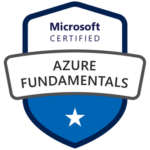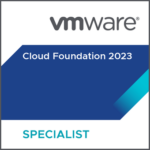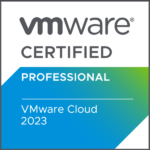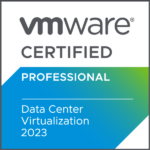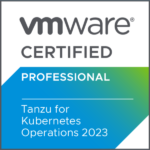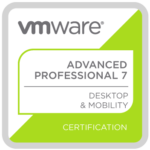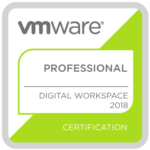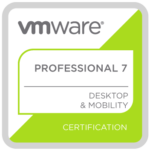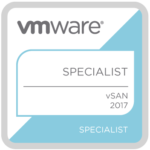Governments around the world are facing increasing pressure to assert control over their digital infrastructure. Whether driven by regulatory mandates, national security concerns, or political developments, the concept of a national cloud or sovereign cloud is gaining serious traction.
But building a national cloud infrastructure is far from straightforward. It is a complex balancing act between innovation, control, compliance, and risk management. Based on my work in the cloud space across Oracle and VMware, and through conversations with customers in the public sector, I have seen the same set of challenges come up again and again.
In this post, I want to walk through five of the biggest challenges governments and regulated industries face when building sovereign cloud environments, and explore some practical ways to solve them.
1. The Data Sovereignty Dilemma
One of the most fundamental challenges is ensuring data remains under the control of the nation that owns it. Most global cloud providers are headquartered in the US and are subject to extraterritorial laws, such as the CLOUD Act. That’s a serious concern for countries in the EU, Middle East, and Asia-Pacific who require sensitive data to remain on national or regional soil, with no foreign access.
Saying that “data is stored in Frankfurt” doesn’t automatically mean it’s sovereign. True data sovereignty requires not only residency, but also legal and operational separation from foreign jurisdictions. This is where traditional hyperscale models fall short.
To address this, vendors like Oracle have started offering sovereign cloud regions – such as the Oracle EU Sovereign Cloud – which are operated and supported entirely from within the EU, by EU-based personnel. That is a major step forward. But ultimately, sovereignty isn’t just a location, it’s an operating model. You need to design the cloud platform from day one with jurisdictional independence and compliance in mind.
2. Securing National-Scale Cloud Platforms
Security is always important in cloud architecture, but when you are talking about a national cloud, the stakes are even higher. You are dealing with mission-critical applications, citizen data, defense information, or classified intelligence systems. A breach or compromise isn’t just a technical issue, it’s a national event.
Unfortunately, many government environments still rely on legacy perimeter models and lack deep cloud-native security architecture. The challenge is how to build a cloud environment that meets zero-trust standards, supports high-assurance workloads, and integrates with national cybersecurity frameworks.
The answer lies in combining hardened cloud regions, private connectivity, data encryption with customer-controlled keys, and isolation mechanisms such as dedicated tenancy or confidential computing. Platforms like Oracle’s National Security Regions (NSRs) offer this level of separation and assurance. But even then, security isn’t just about tools. It’s about governance. Governments must define strict policies and enforce them consistently across cloud and on-prem environments.
3. Operational Control and Cloud Autonomy
A common concern I hear from public sector architects is the fear of losing operational control. Many cloud services are abstracted to a point where customers can’t dictate how and where they run. For governments, that’s not always acceptable. Especially when they want to run critical workloads or classified systems.
There’s a growing demand for operational autonomy: the ability to manage, monitor, and maintain the infrastructure independently or through trusted local entities. This is where concepts like “sovereign operations” come into play.
In a sovereign cloud model, operations – including support, monitoring, and incident response – are handled within the national boundary, by vetted personnel. Oracle has implemented this model in its EU Sovereign Cloud, ensuring no foreign nationals are involved in the operational chain. It is this level of people-based sovereignty, not just technology, that defines real national cloud infrastructure.
4. Keeping Up with the Compliance Maze
Compliance is one of the biggest drivers behind national cloud initiatives, and also one of the most frustrating challenges. The regulatory landscape is constantly evolving. Governments must comply with GDPR, national data protection laws, critical infrastructure regulations, defense policies, and sector-specific standards.
But cloud platforms evolve faster than laws do. It’s hard to maintain compliance across services, especially when new features are released weekly and spread across different regions.
One way to address this is by using compliance automation frameworks. Cloud providers like Oracle offer templates and reference architectures that help you deploy workloads in a compliant-by-default manner. Some even include compliance-as-code, which automates controls and checks during the deployment process.
But even the best frameworks won’t help unless your cloud provider aligns its service roadmap with local regulations. That’s why it’s essential to work with vendors who treat compliance not as a checkbox, but as a core part of their product design and go-to-market strategy.
5. Innovation vs. Risk Aversion
The final challenge is cultural, not technical.
Most public sector organizations know they need to modernize, but they operate in environments where risk is avoided at all costs. Innovation often takes a backseat to auditability and procurement processes. As a result, cloud transformation projects get stuck in POCs, or never leave the pilot phase.
Ironically, sovereign clouds are often seen as “less capable” than commercial regions, reinforcing this hesitance. But that perception is changing. Today, sovereign cloud offerings are increasingly on par with global platforms. And in some cases, they offer more control and greater visibility.
To overcome internal resistance, governments need to create safe innovation spaces. That means using pre-certified landing zones, sandbox environments, and trusted architectural patterns. It also means investing in cloud fluency across teams, so that risk management and agility aren’t mutually exclusive.
Note: “Cloud fluency” refers to the ability of individuals or organizations to understand, use, and make informed decisions about cloud technologies, confidently and effectively.
Final Thoughts
Building a national cloud infrastructure isn’t just a technical project. I’s a long-term strategic effort that combines technology, law, policy, and trust. The challenges are significant, but solvable, especially if they’re tackled early and with the right partners.
Whether it’s data sovereignty, security assurance, operational control, or compliance, governments need platforms that are sovereign-by-design, not just sovereign in name. And vendors need to step up with credible solutions that support national priorities without compromising cloud innovation.
Sovereign cloud is no longer a niche requirement. It’s a mainstream architectural model and one that will shape the next decade of public sector IT strategy.


















